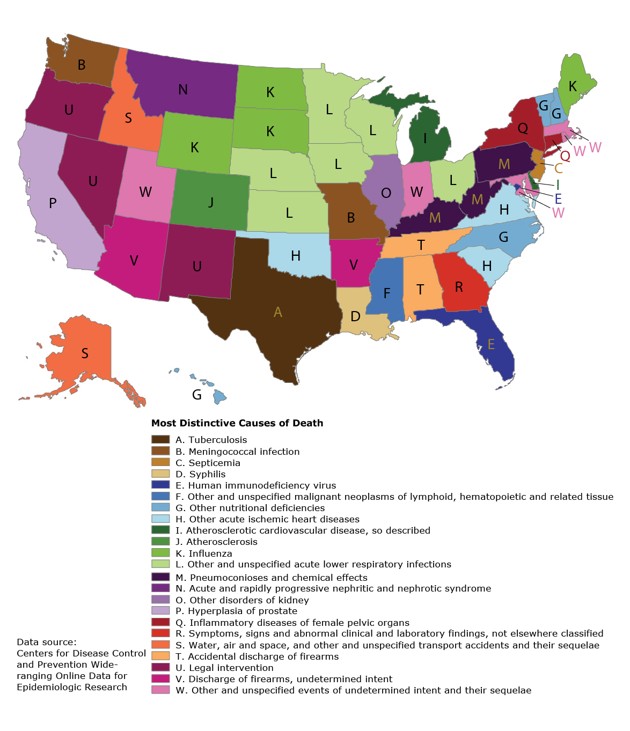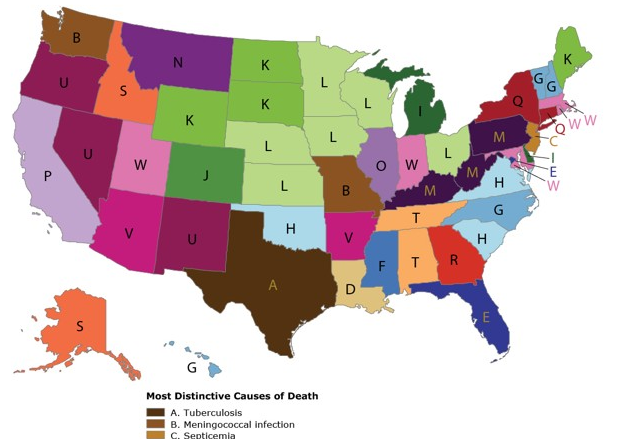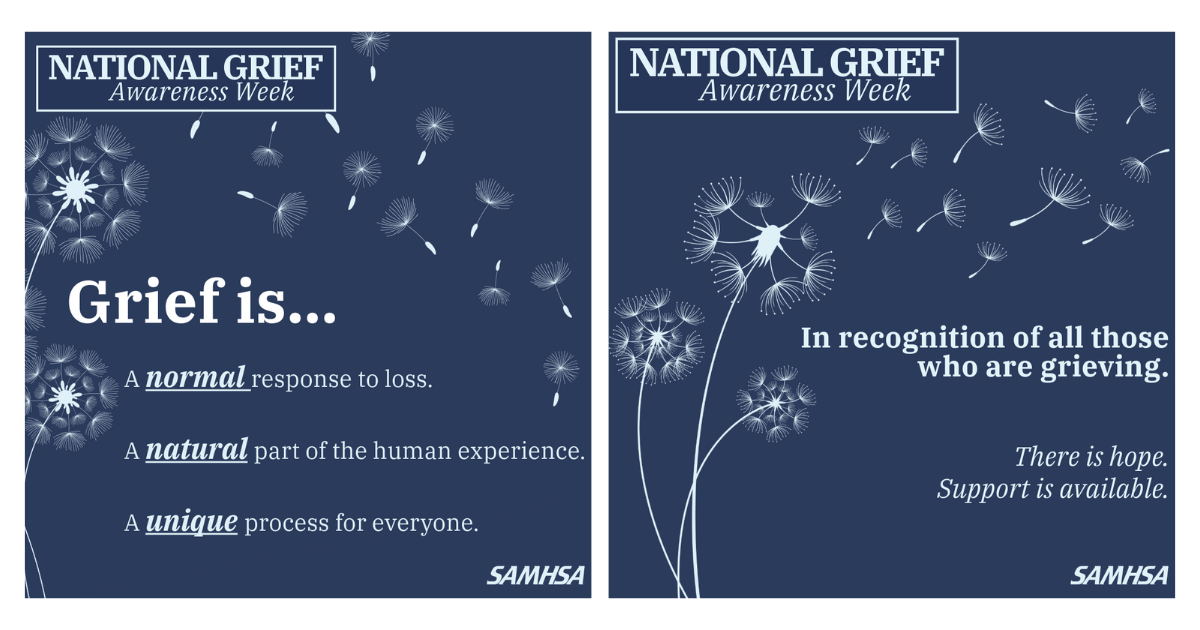How Do People in Your State Die?
Article by Olga Khazan, The Atlantic

People in Louisiana are disproportionately likely to be felled by syphilis, while Midwesterners might want to watch out for lower respiratory infections. And Arizonans are slightly more likely to be shot to death. Their killer’s intent? Undetermined.
That’s all according to a map the CDC recently released depicting the most distinctive cause of death in each state and D.C. from 2001 through 2010.
Note that this is not the most common cause of death—that’s cancer or heart disease in every state—but rather, an unusual cause of death that is disproportionately common in each state.
It’s important to keep in mind, because this isn’t the most common cause of death, that in some states just a few dozen people are dying of each of these conditions. The report authors note that the numbers of deaths depicted on the map range “from 15,000 deaths from HIV in Florida to 679 deaths from tuberculosis in Texas to 22 deaths from syphilis in Louisiana.” In Montana, just 11 people died of rapidly progressive nephritic and nephrotic syndrome, a type of kidney disease. Another limitation is that the map can only show one cause of death, even though for most states, more than one cause was distinctive.
This kind of map can be useful, though, because it helps reveal unique health conditions and social issues emerging in various states. (Other types of “most popular” maps risk being too monolithic. When I looked at the most common reason for ER visits by state, for example, I found that just four things were sending Americans to the hospital, no matter where they lived.)
According to this map, people in coal-mining states are still disproportionately likely to die of pneumoconiosis, or black lung. In Oregon, Nevada, and New Mexico*, meanwhile, people are disproportionately dying from legal intervention, or “deaths due to injuries inflicted by police or other law-enforcement agents.”
The authors note that this study also highlights the importance of categorizing causes of death accurately on death certificates. “It would not take many systematic miscodes involving an unusual cause of death for it to appear on this type of map,” they write.




